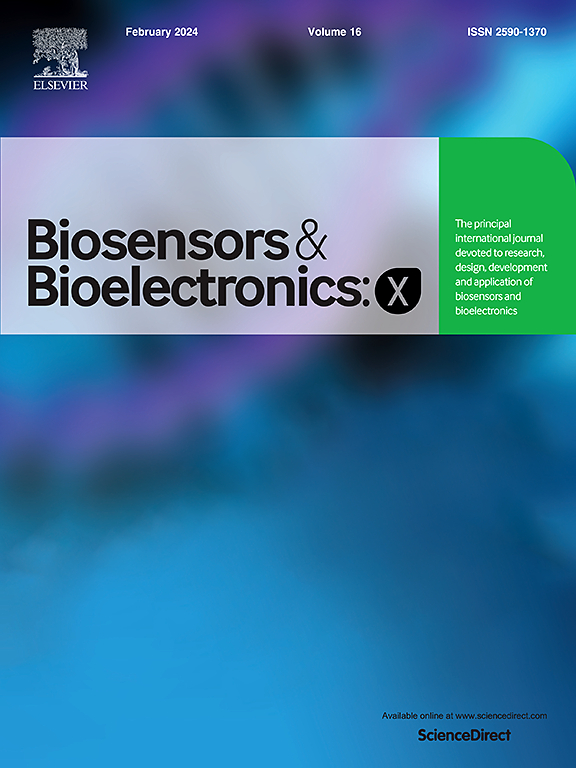Paper-based origami assisted and enhanced electroanalytical detection of β-Amyloid peptide in plasma samples
IF 10.61
Q3 Biochemistry, Genetics and Molecular Biology
引用次数: 0
Abstract
In this work, we demonstrate how the analytical performance towards β-amyloid (Aβ(1–42) detection can be easily improved by using a printed label-free electrochemical immunosensor coupled to an external paper-based origami. Coupling the immunosensor with a customized foldable origami allows for an increase of resulting sensitivity towards the detection of Aβ(1–42) in both standard and biological samples. The features of paper are fundamental for the analysis of Aβ(1–42), recognized as a central indicator of Alzheimer's pathology, considering the low levels in plasma associated with early-stage disease. The proposed strategy highlights up to a 5-fold signal enhancement in both buffer and plasma at low Aβ(1–42) concentrations, bringing the platform's performance toward clinical requirements. The immunoplatform has been systematically optimized through electrochemical characterization and parameter tuning, achieving limits of detection of 2.7 ng/mL in buffer and 4.7 ng/mL in undiluted plasma, with a linear range up to 1 μg/mL. The platform shows satisfactory repeatability (<10 %) and excellent selectivity in the presence of interfering plasma proteins. Overall, this work offers a promising foundation for the development of accessible and scalable tools for early Alzheimer's disease screening.
纸基折纸辅助和增强血浆样品中β-淀粉样肽的电分析检测
在这项工作中,我们展示了如何通过使用与外部纸基折纸耦合的印刷无标签电化学免疫传感器来轻松提高β-淀粉样蛋白(a β(1-42))检测的分析性能。将免疫传感器与定制的可折叠折纸结合,可以提高对标准样品和生物样品中a β(1-42)检测的灵敏度。这篇论文的特点是分析a β(1-42)的基础,考虑到低水平的血浆与早期疾病相关,a β(1-42)被认为是阿尔茨海默病病理的中心指标。该策略强调在低浓度a β(1-42)下缓冲液和血浆中的信号增强高达5倍,使该平台的性能达到临床要求。通过电化学表征和参数调整对免疫平台进行了系统优化,在缓冲液中检测限为2.7 ng/mL,在未稀释血浆中检测限为4.7 ng/mL,线性范围可达1 μg/mL。该平台在干扰血浆蛋白存在下具有满意的重复性(< 10%)和优异的选择性。总的来说,这项工作为开发可获得和可扩展的早期阿尔茨海默病筛查工具提供了有希望的基础。
本文章由计算机程序翻译,如有差异,请以英文原文为准。
求助全文
约1分钟内获得全文
求助全文
来源期刊

Biosensors and Bioelectronics: X
Biochemistry, Genetics and Molecular Biology-Biophysics
CiteScore
4.60
自引率
0.00%
发文量
166
审稿时长
54 days
期刊介绍:
Biosensors and Bioelectronics: X, an open-access companion journal of Biosensors and Bioelectronics, boasts a 2020 Impact Factor of 10.61 (Journal Citation Reports, Clarivate Analytics 2021). Offering authors the opportunity to share their innovative work freely and globally, Biosensors and Bioelectronics: X aims to be a timely and permanent source of information. The journal publishes original research papers, review articles, communications, editorial highlights, perspectives, opinions, and commentaries at the intersection of technological advancements and high-impact applications. Manuscripts submitted to Biosensors and Bioelectronics: X are assessed based on originality and innovation in technology development or applications, aligning with the journal's goal to cater to a broad audience interested in this dynamic field.
 求助内容:
求助内容: 应助结果提醒方式:
应助结果提醒方式:


